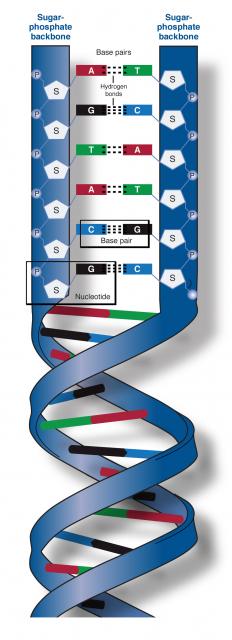Phosphate Backbone
A phosphate backbone is the portion of the DNA double helix that provides structural support to the molecule. DNA consists of two strands that wind around each other like a twisted ladder. Each strand has a backbone made of alternating sugar (deoxyribose) and phosphate groups. Attached to each sugar is one of four bases--adenine (A), cytosine (C), guanine (G), or thymine (T). The two strands are held together by bonds between the bases, with adenine forming a base pair with thymine, and cytosine forming a base pair with guanine. Courtesy: National Human Genome Research Institute

Source: .
http://www.genome.gov/
http://www.genome.gov/
License: Public Domain. If you are going to redistribute this image online, a hyperlink to the above source page is mandatory.
© 2007–2024 XoaX.net LLC. All rights reserved.
